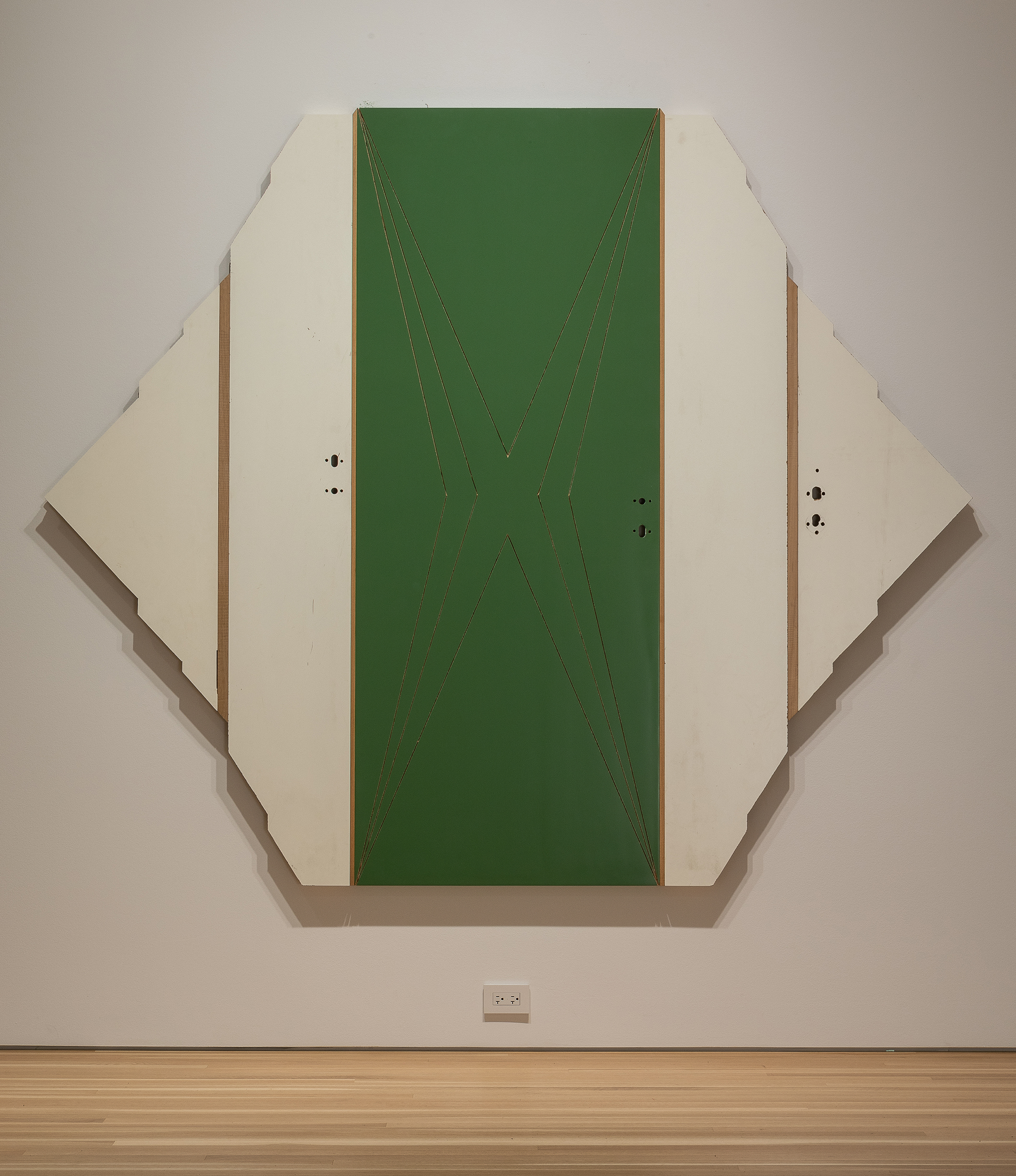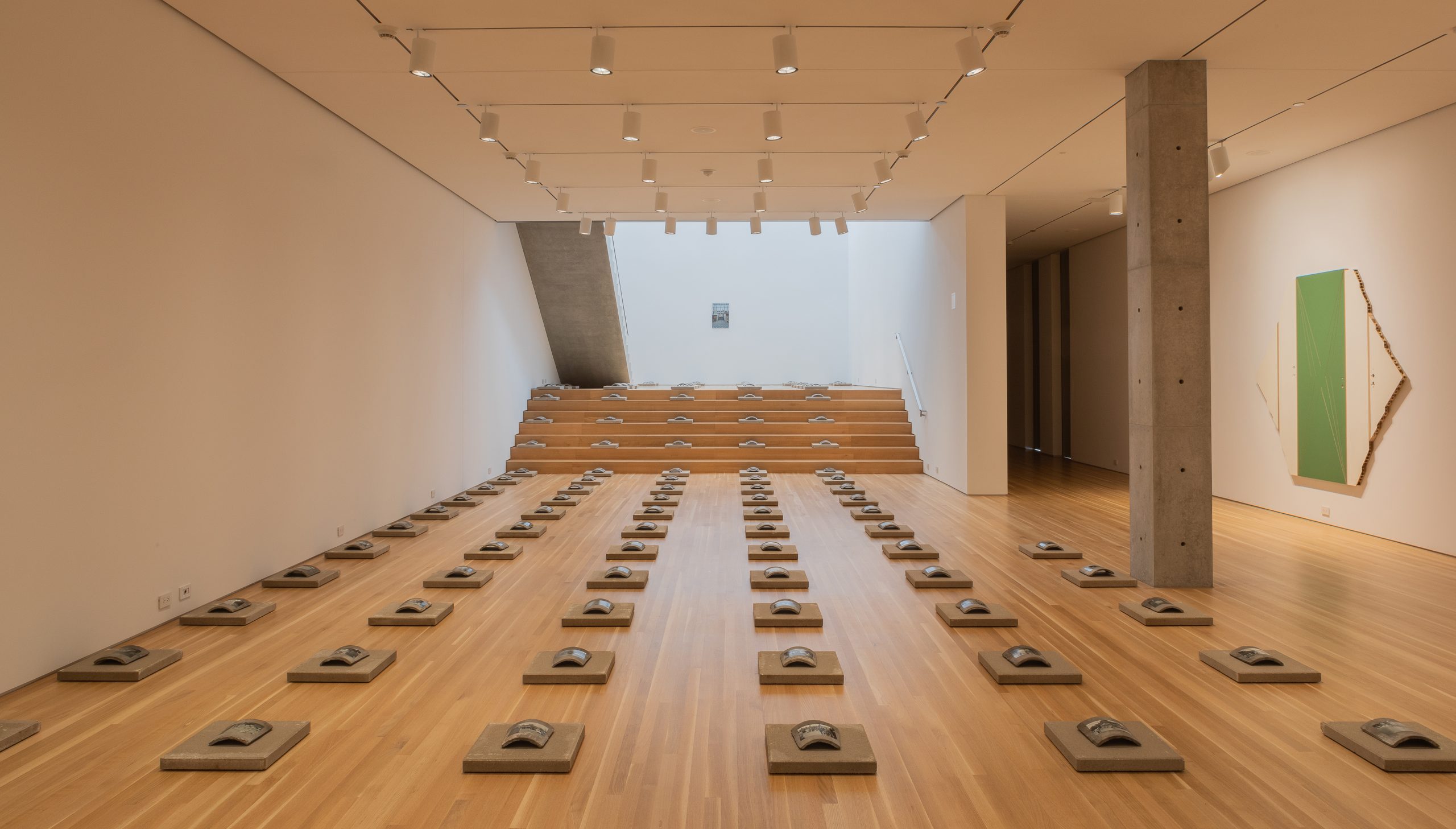
-
Shi Hui, Float, 2000/2007/2013
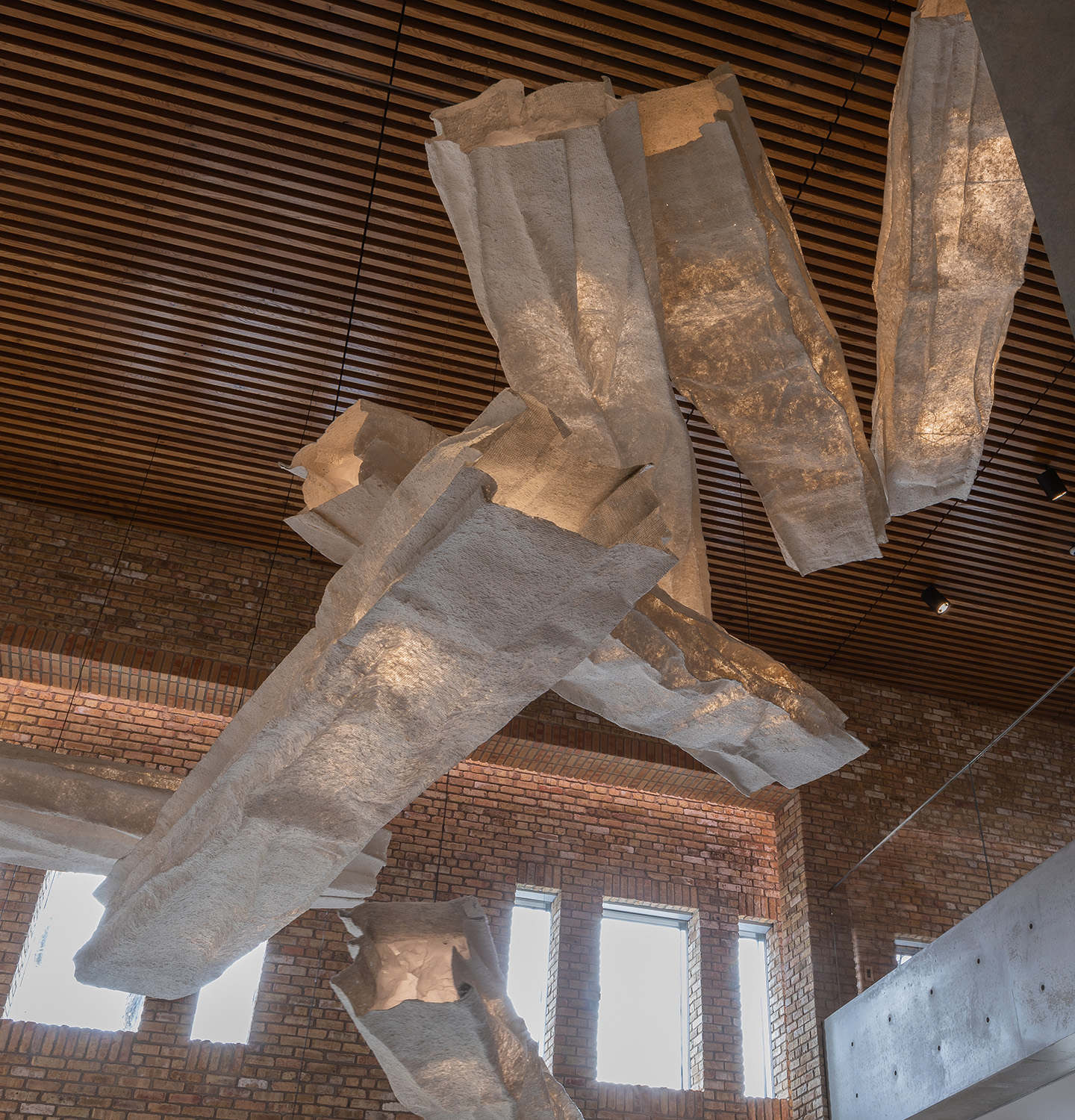
-
Zhan Wang, Ornamental Rock, 1996
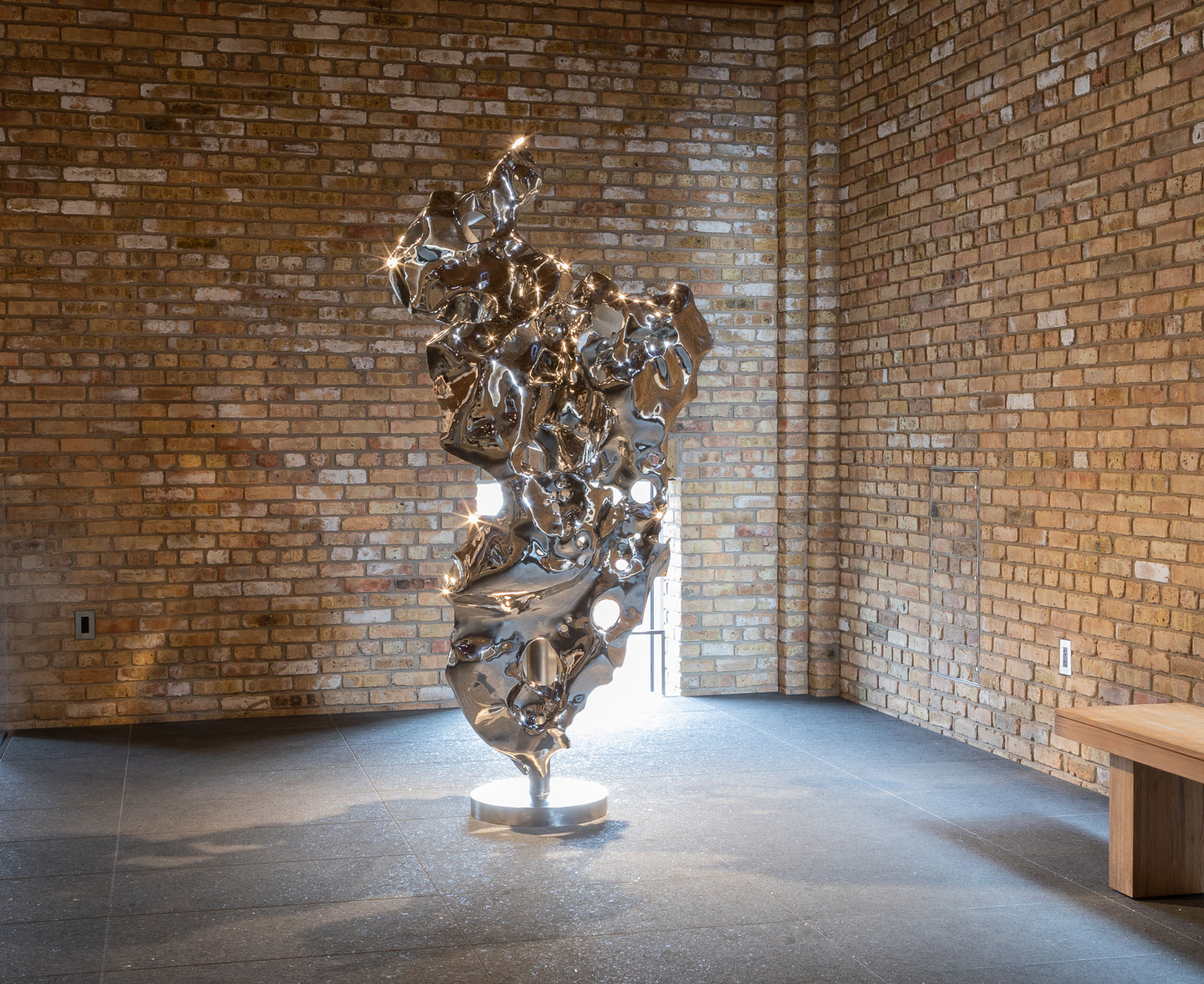
-
Zhan Wang, Beyond 12 Nautical Miles—Floating Rock Drifts on the Open Sea, 2000
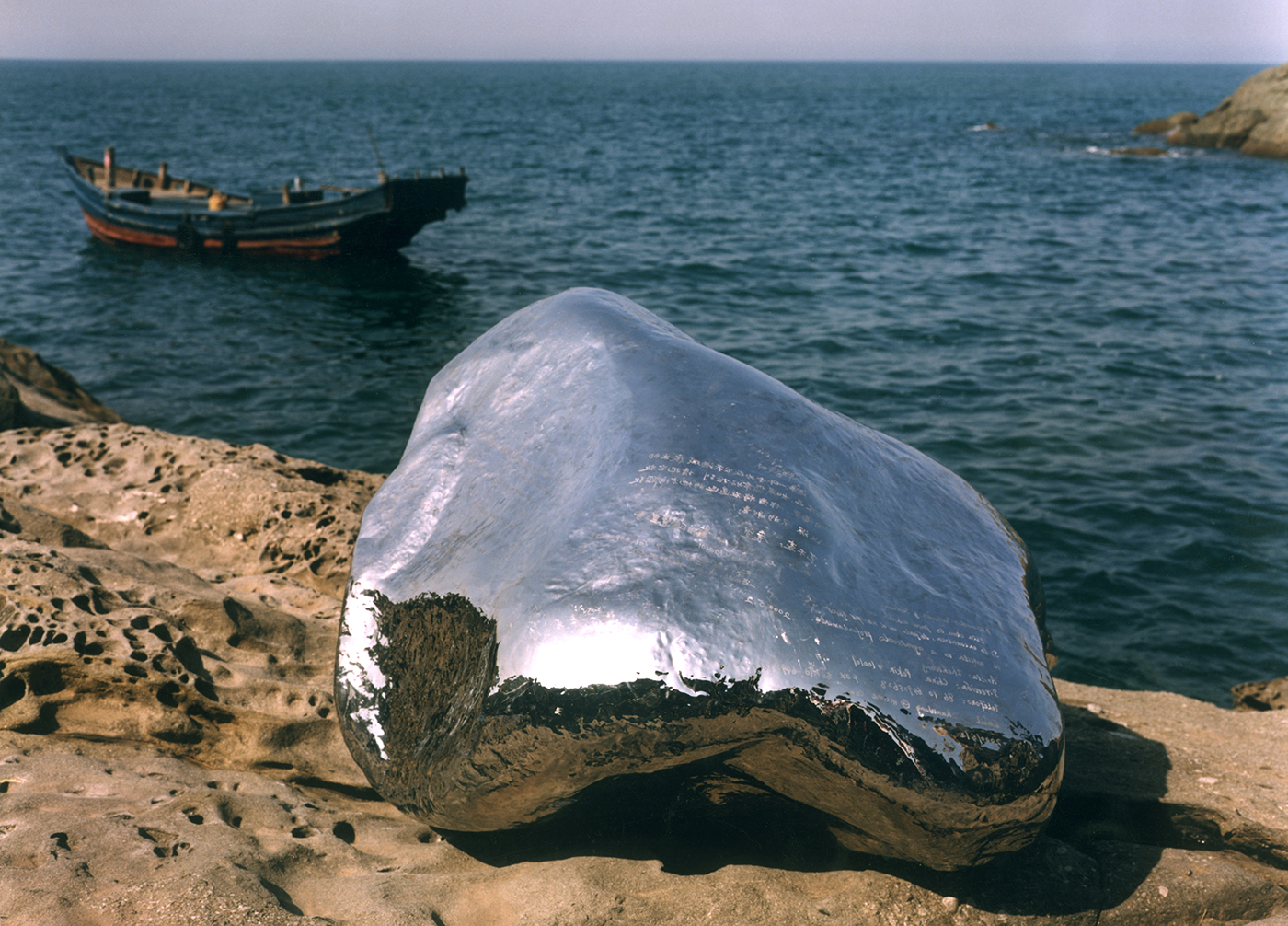
-
Zhang Huan, Ash Painting No. 5, 2006
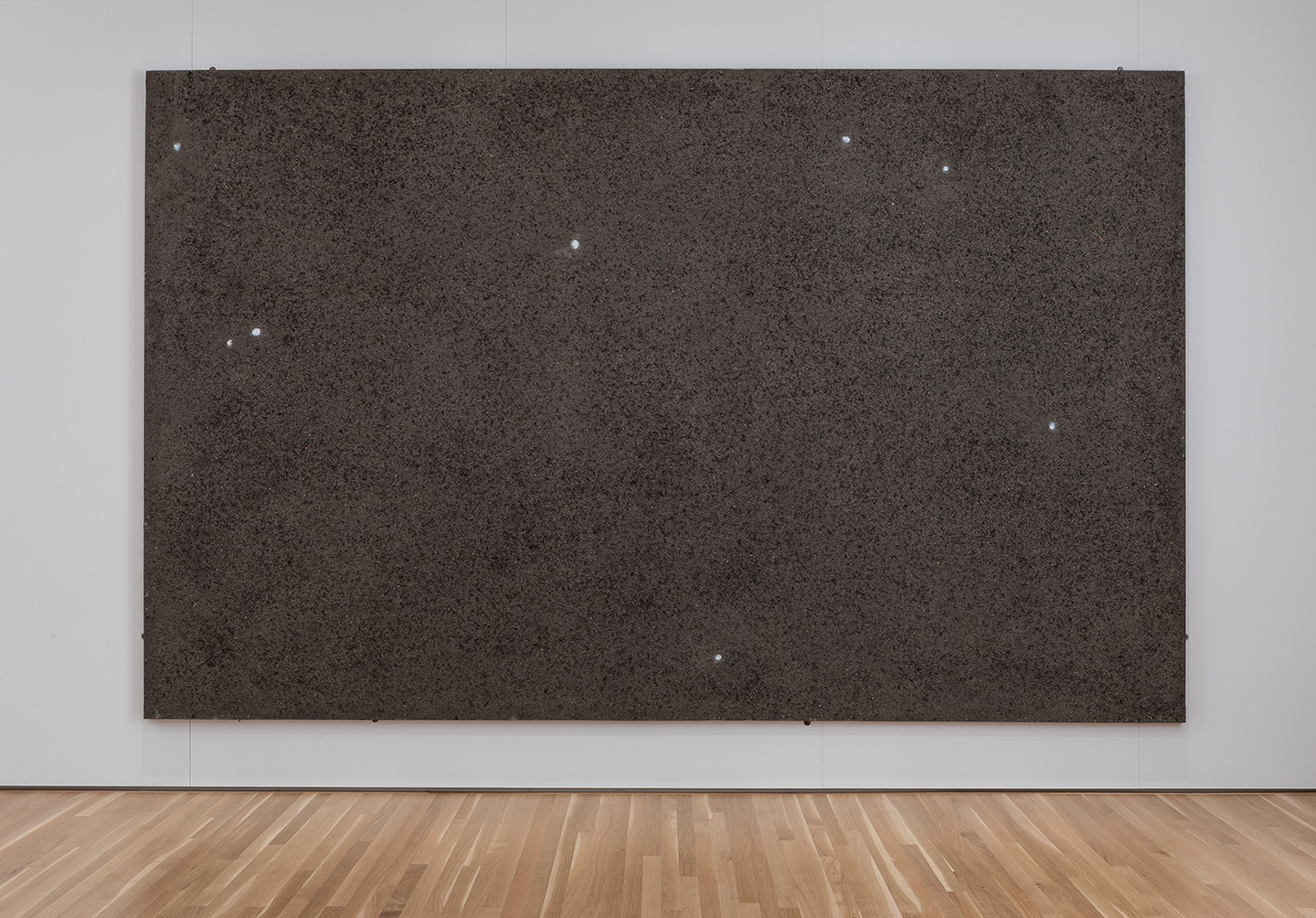
-
Hu Xiaoyuan, Ant Bone IV, 2015
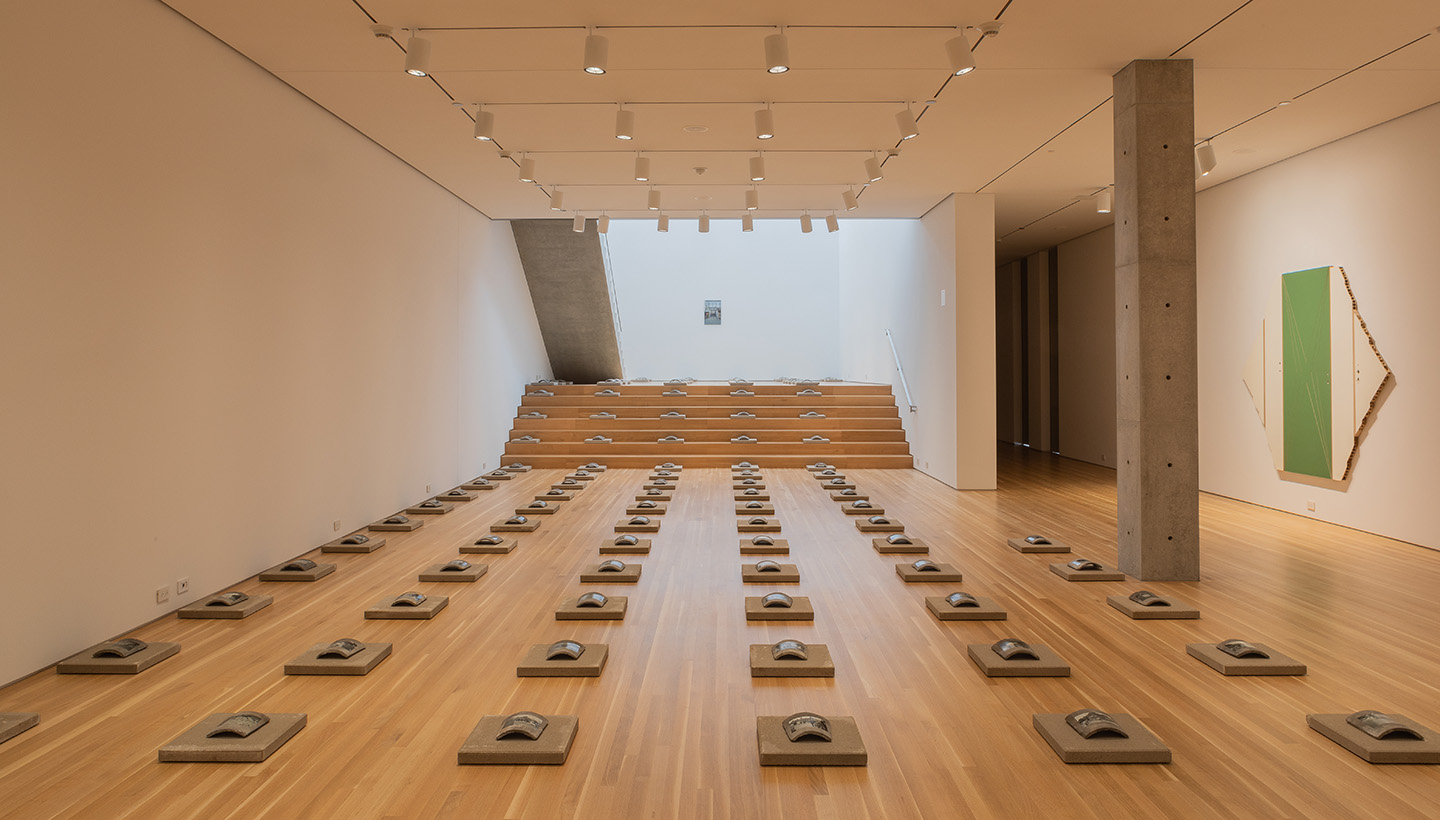
-
Liu Wei, Exotic Lands No. 15, 2013
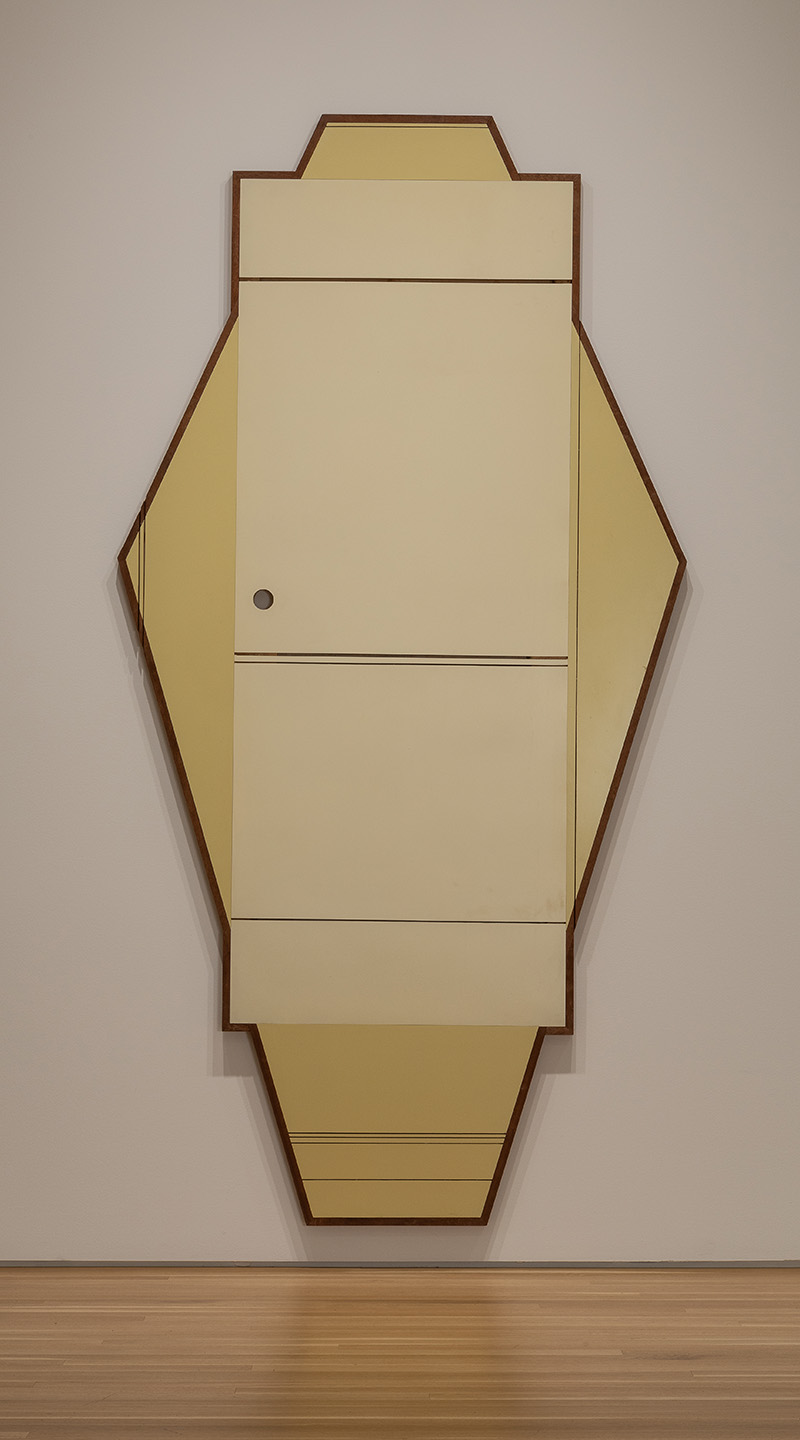
-
Liu Wei, Exotic Lands No. 21, 2013
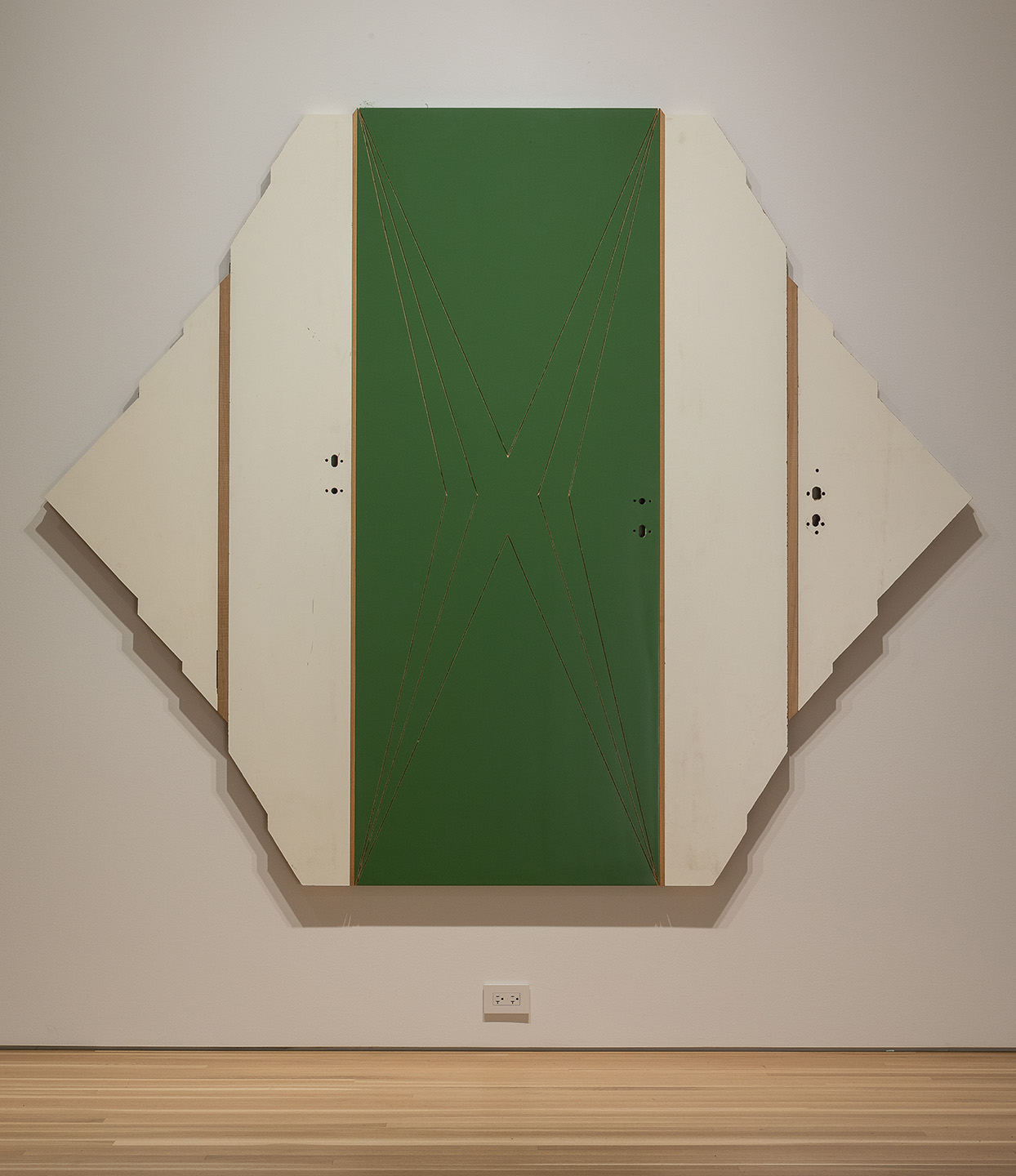
Works on Main Floor
Shi Hui, Float, 2000/2007/2013
Wire mesh and xuan paper pulp
Dimensions variable
Collection of the artist, Hangzhou
Rising weightlessly to the top of the atrium, Float was made by applying a thin coat of xuan paper pulp onto wire mesh forms. Trained as a fiber artist, Shi Hui approaches xuan paper in a highly unconventional way. Instead of painting or writing calligraphy on the fine rice paper, she employs the paper as a fibrous material for weaving and sculpting. In Float, Shi explores the possibilities for molding woven materials without restricting herself to any structural confines. Soft lighting from within accentuates the sections’ diaphanous surfaces and the organic creases running along their bodies.
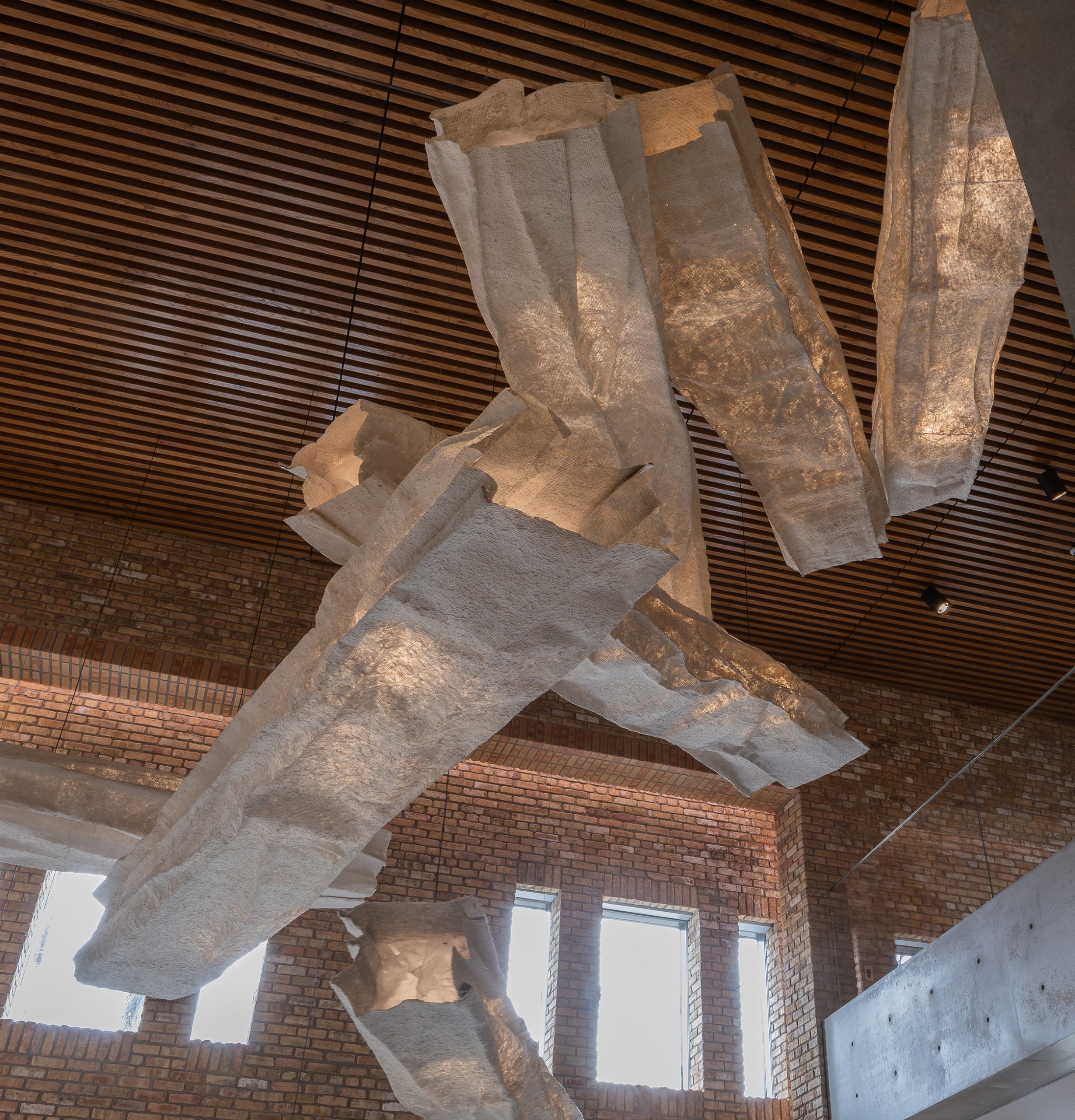
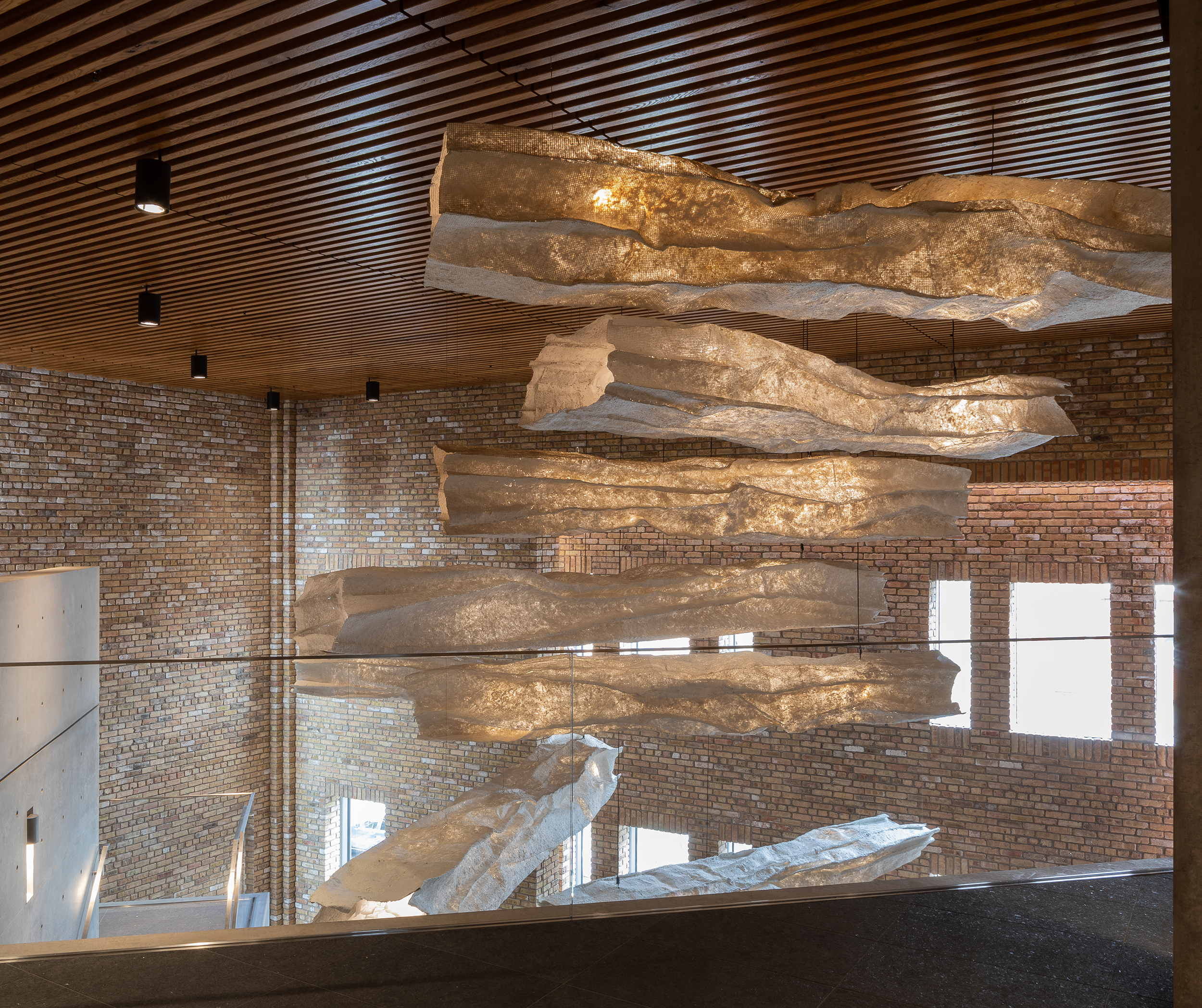
Zhan Wang, Ornamental Rock, 1996
Stainless steel
Without base: 81 1/2 x 32 1/2 x 36 in. (207 x 82.5 x 91.4 cm)
Diameter of base: 35 x 20 in. (88.9 x 50.8 cm)
Smart Museum of Art, The University of Chicago, Gift of Carl Rungius, by exchange
Sculptor Zhan Wang is best known for making stainless steel rocks inspired by gongshi, or scholars’ rocks. Members of the literati class have collected rocks whose shapes resemble extraordinary landscapes since the Song Dynasty. As if to reverse this tradition, Zhan produces metal replicas of found rocks by pounding thin sheets of stainless steel against their surfaces. The steel sheets are then welded together and polished to a reflective shine, a process that requires not only brute force but also the precision of a fine jeweler. When he first started making these rocks, Zhan intended to place his steel copies not in a garden but throughout Beijing’s rapidly changing cityscape. The glistening surface would reflect back the new urban character instead of the gongshi’s idyllic landscapes.
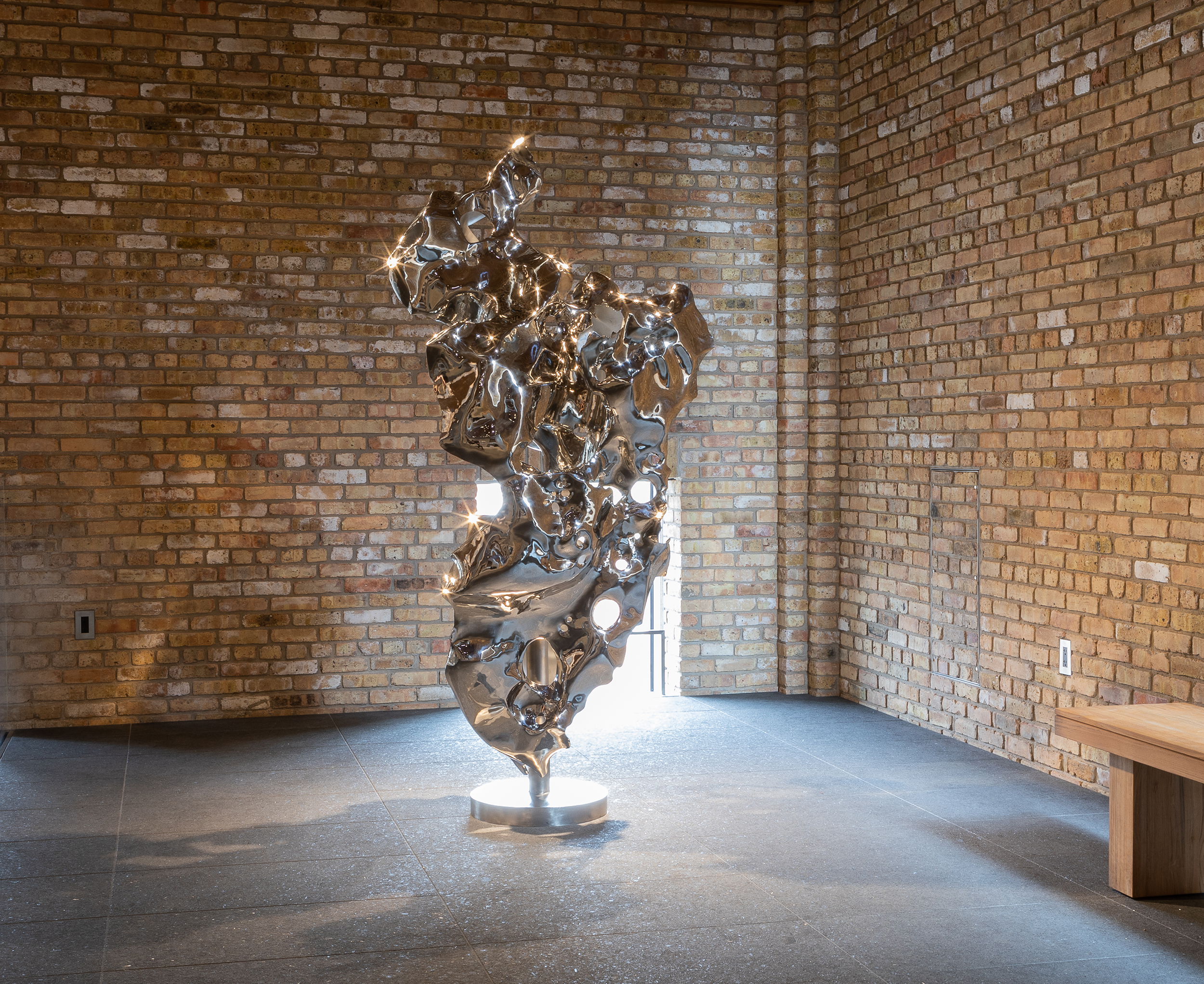
Zhan Wang, Beyond 12 Nautical Miles—Floating Rock Drifts on the Open Sea, 2000
Single-channel video, 8:36 minutes running time
Collection of the artist
In this performance project, Zhan Wang carefully molded a hollow stainless steel rock and left it to float in the open seas. The work’s title refers to the point beyond which any country can claim open waters as its territory. Left to drift wherever the currents take it, the rock has the following passage inscribed in five different languages upon its surface:
This is a piece of art created specifically to be exhibited in the open sea. If by any chance you pick it up, please put it back into the ocean. The artist thanks you from afar.

Zhang Huan, Ash Painting No. 5, 2006
Incense ash, charcoal, and resin on canvas
98 1/2 x 157 1/2 in. (250 x 400 cm)
Pearl Lam Private Collection
Zhang Huan began using ash as a material following a visit to the Longhua Temple in Shanghai, where he was struck by the ritual significance of the ash from joss sticks burned for prayers. As he described the experience, “The temple floor was covered with ash which leaked from the giant incense burner [ . . . ] These ash remains speak to the fulfillment of millions of hopes, dreams and blessings.” After collecting ash from temples throughout China, he transformed the ash by mixing it with water to make a primitive “paint” that could then be spread across the canvas. Although the earliest of these paintings were abstract, he shifted to figuration in 2007 when he began rendering Cultural Revolution-era photographs in ash. For Seeds, the artist’s studio assistants meticulously sorted ash into a palette of varying shades of gray and then reproduced an image of collective farming. The scene appears grand, but its cold, gray palette portends that the nationwide campaigns of the era were ultimately disastrous due to impossible demands for agricultural production.
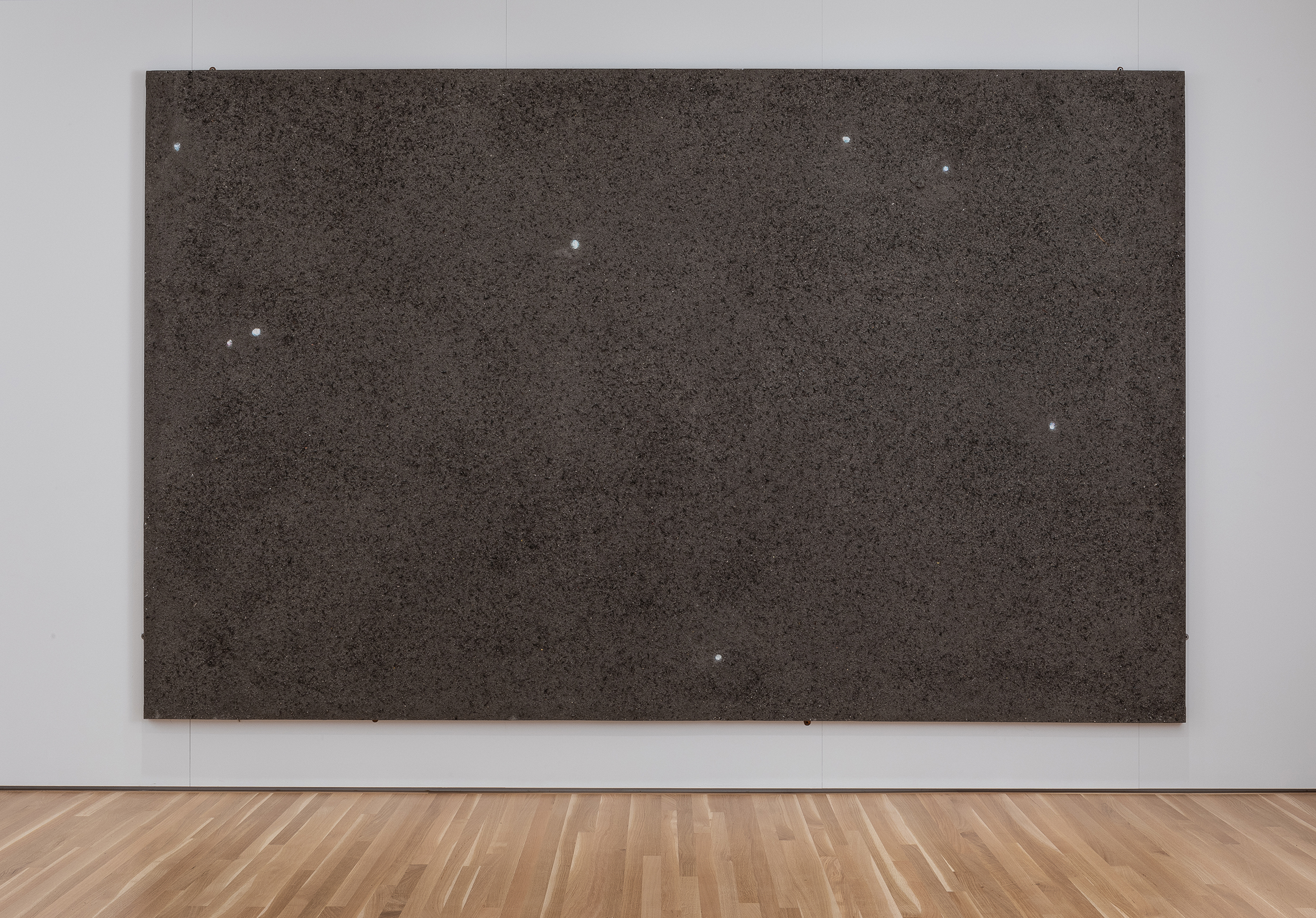
Yin Xiuzhen, Transformation, 1997
Black and white photographs mounted on tiles
98 1/2 x 157 1/2 in.
Collection of the artist, courtesy of Pace Gallery
For Transformation, Yin Xiuzhen collected 128 cement roof tiles from the thousands that were discarded after the demolition of historic courtyard houses in her Beijing neighborhood. On each tile, she affixed a photograph documenting the vibrancy of the neighborhood and its changing character. Although originally trained in oil painting, Yin began to use cement and other construction materials for sculptures in the mid-1990s. At the time, Beijing was rapidly growing, so much so that she remembers the city constantly smelling like cement powder. For Yin, these unconventional materials embody the memories of a place and time period. She explains her artistic process:
When you take the rubble directly into the works, these materials, with their experiences and histories, speak for themselves. They have individual and collective memories, as well as many traces of life. When these materials emerge in a different environment, a vein between true reality and the artwork forms. It formalizes real life and allows objects to speak, to have their own voice.

Liu Wei, Exotic Lands No. 15, 2013
Wood and stainless steel
54 1/4 x 106 x 1 1/2 in. (137.8 x 270 x 3.8 cm)
The Chu Collection
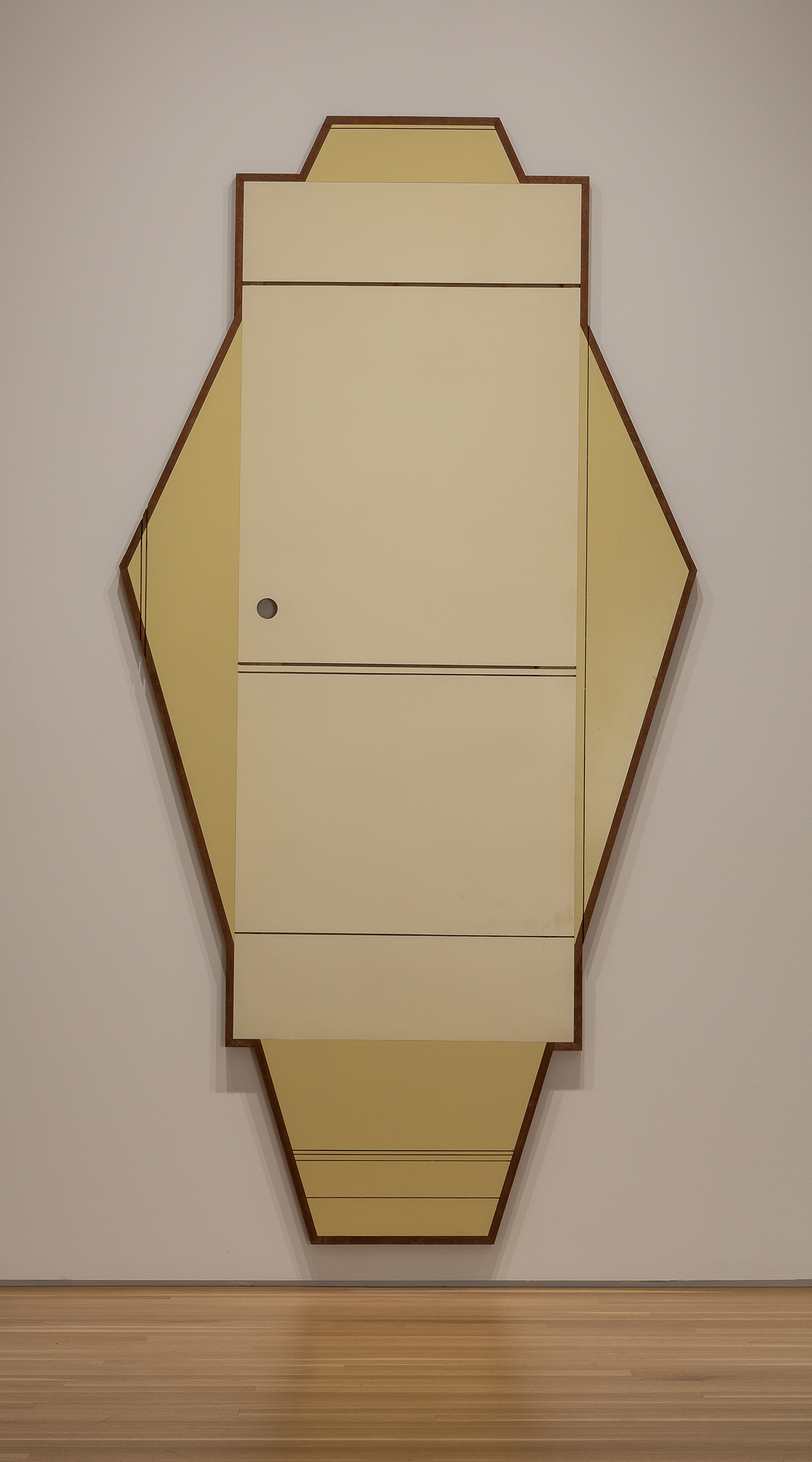
Liu Wei, Exotic Lands No. 21, 2013
Wood and stainless steel
54 1/4 x 106 x 1 1/2 in. (137.8 x 270 x 3.8 cm)
The Chu Collection
These two works are made from wooden doors that Liu Wei reclaimed from piles of scrap building materials found around the migrant worker village where his studio is located. The doors likely came from buildings once located in the center of Beijing that were demolished to make way for a new modern cityscape. Liu accentuates the original characteristics of the material in his geometric configurations— triangular side panels echo the incisions along the door and diagonal cuts along them expose a honeycomb pattern within—to foreground various details of the materials’ physicality. Furthermore, Liu lays bare indications of their previous use, such as the round holes of doorknobs and the chipped paint.
